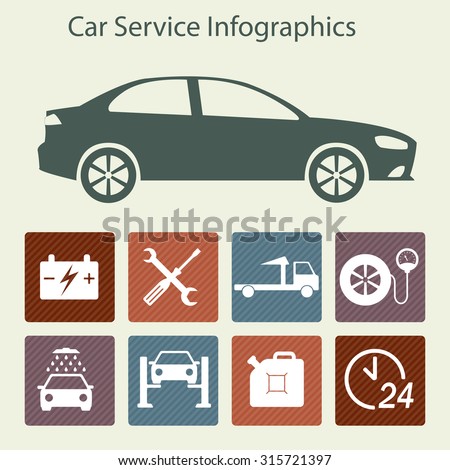Understanding Your Cars And Truck'S Caution Lights: What Do They Actually Mean?
Understanding Your Cars And Truck'S Caution Lights: What Do They Actually Mean?
Blog Article
Content By-Faulkner Kejser
When you're behind the wheel, those beautiful caution lights on your dashboard can be a little bit difficult. Do you understand what they're attempting to inform you about your auto's health and wellness? Understanding the significance of these lights is important for your security and the long life of your car. So, the next time one of those lights pops up, would not you want to analyze its message accurately and take the required steps to resolve it?
Common Warning Lighting and Interpretations
Identify typical caution lights in your auto and understand their definitions to guarantee safe driving.
The most regular caution lights include the check engine light, which signals problems with the engine or discharges system. If this light begins, it's crucial to have your lorry checked promptly.
The oil stress alerting light shows reduced oil stress, requiring prompt interest to stop engine damage.
A blinking battery light could suggest a damaged billing system, possibly leaving you stranded if not addressed.
The tire stress tracking system (TPMS) light signals you to low tire pressure, affecting vehicle security and fuel effectiveness. Ignoring this could result in unsafe driving conditions.
The abdominal light suggests a problem with the anti-lock stopping system, endangering your ability to stop rapidly in emergencies.
Finally, the coolant temperature cautioning light warns of engine getting too hot, which can result in severe damages otherwise dealt with promptly.
Understanding these common caution lights will certainly help you deal with problems quickly and preserve safe driving problems.
Value of Prompt Attention
Understanding the common caution lights in your vehicle is only the primary step; the relevance of immediately addressing these cautions can not be emphasized sufficient to guarantee your safety when driving.
When a warning light illuminates on your control panel, it's your vehicle's means of interacting a prospective issue that needs focus. Neglecting these cautions can lead to extra extreme issues later on, jeopardizing your safety and security and potentially costing you extra in repairs.
Motivate attention to advising lights can stop malfunctions and mishaps. As an example, a flashing check engine light can indicate a misfire that, if left ignored, can cause damage to the catalytic converter. Resolving https://brakerotors52739.ja-blog.com/31265015/an-important-manual-describing-the-necessary-devices-for-every-auto-service-center-subjecting-the-strategies-that-contribute-to-reliable-automobile-upkeep can conserve you from a pricey repair service.
Similarly, a brake system cautioning light might signify low brake fluid or used brake pads, important elements for your safety and security when driving.
Do It Yourself Troubleshooting Tips
If you see a warning light on your dashboard, there are a couple of do it yourself fixing tips you can attempt before looking for professional help.
https://knoxkfztm.buyoutblog.com/31263685/a-vital-overview-to-the-essential-tools-in-every-automobile-service-center-unveiling-the-keys-behind-reliable-car-maintenance is to consult your auto's handbook to comprehend what the details warning light suggests. Often the detailing specialist can be as straightforward as a loose gas cap triggering the check engine light. Tightening the gas cap may deal with the issue.
One more common problem is a low battery, which can trigger various cautioning lights. Checking the battery links for corrosion and guaranteeing they're protected might fix the issue.
If a caution light persists, you can attempt resetting it by separating the auto's battery for a couple of mins and afterwards reconnecting it. Additionally, examining pop over to this website , such as oil, coolant, and brake liquid, can aid repair alerting lights associated with these systems.
Verdict
To conclude, recognizing your vehicle's caution lights is necessary for maintaining your automobile running smoothly and safely. By immediately attending to these alerts and recognizing what they indicate, you can stay clear of expensive repairs and potential break downs.
Remember to consult your cars and truck's manual for particular details on each alerting light and act accordingly to ensure a hassle-free driving experience.
Stay educated, stay risk-free on the road!
